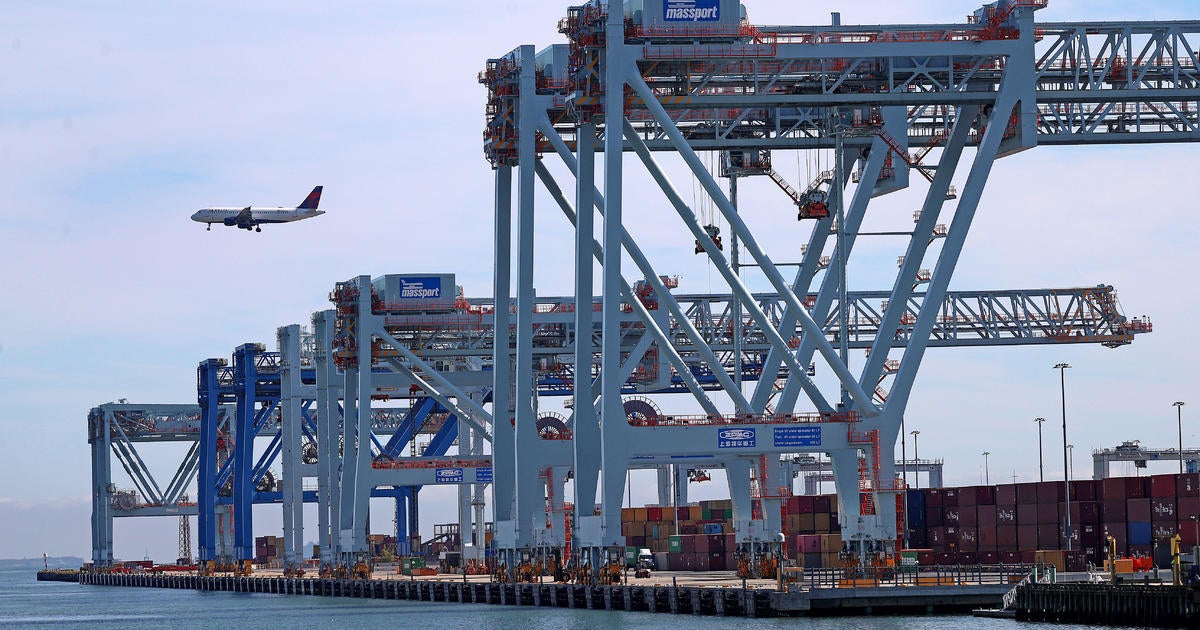East Coast Dockworkers Avert Strike, Securing a Six-Year Contract
In a dramatic turn of events that sent shockwaves through the American shipping industry, East and Gulf Coast port operators reached a last-minute agreement with the International Longshoremen's Association (ILA), averting a potentially crippling strike that threatened to halt the flow of goods across the nation. The deal, announced late Wednesday, secures a new six-year contract and prevents a shutdown initially scheduled for January 15th.
This monumental agreement not only protects the livelihoods of thousands of dockworkers but also safeguards the smooth operation of major shipping routes vital to the American economy. Let's dive into the details of this critical development and explore what it means for both workers and the nation.
A Victory for Workers, a Lifeline for the Nation's Economy
The deal marks a significant win for the ILA, securing essential job protections and laying out a pathway for modernization and technological advancements at the ports. The agreement acknowledges the role of technology while simultaneously guaranteeing job security and creating a new wave of opportunities for workers. This balance shows a commitment to a future where modernization goes hand-in-hand with maintaining a robust and well-paid workforce. For the American economy, the averted strike prevents the costly consequences of potential supply chain disruptions, which would have affected not only businesses but also consumers across the nation.
Job Security Amidst Automation Concerns
A major sticking point in the negotiations involved anxieties surrounding increased automation. The ILA raised concerns that the utilization of technology, such as automated gates and digital platforms, could lead to job losses for longshoremen. This fear stems from the automation already evident in some major international ports. The successful resolution confirms a balance between technological innovation and worker protection, reassuring employees about their future role.
Technological Advancements and Port Efficiency
The agreement also emphasizes a pathway toward the integration of advanced technologies that could drastically increase efficiency across the nation's port system. While the details of the modernization plan are still under wraps, this commitment reflects a proactive move towards competitiveness with automated ports around the globe, ensuring that America remains a global leader in shipping and trade. This advancement ensures higher efficiency and overall system improvement across American shipping and trade infrastructure.
Addressing the Pay Gap and Ensuring a Fair Wage
Previous contracts saw the highest-paid dockworkers earning $39 per hour, or approximately $81,000 annually. Discussions about pay were a crucial element in the successful negotiation. Although the specific terms of the agreement aren't yet available, the tentative deal struck in October indicated an hourly wage hike exceeding $60. Reports suggest an annual earning potential surpassing $200,000 for a significant portion of workers, highlighting a concerted effort to elevate pay standards for a deserving segment of America's working population. This also puts the American shipping and trade infrastructure on par with global competitors.
Long-Term Implications of the Deal
This new contract spans six years, ensuring long-term stability for the shipping industry and promoting peace of mind for workers and businesses. The long-term perspective of this deal allows planning across multiple sectors while ensuring efficient development and integration of new technology to meet upcoming industry changes.
Fair Pay, Fair Play
This labor agreement showcases how a balanced approach between job security and innovation can produce mutually beneficial outcomes. The significant increase in potential earnings, particularly when considering royalty shares, assures a livable wage while improving labor dynamics in the broader context of modern trade.
Technological Advancements: The Path to Automation, Safety and Efficiency
This new contract includes investments in advanced technologies such as automated gates, port community systems, RFID and GPS for tracking purposes and various systems utilizing the internet of things (IoT). This blend of technologies, both modern and established, should increase automation, operational speed, and enhance the safety of port operations. Port modernization will streamline logistics, manage supplies efficiently, and boost the overall speed of goods and materials transfer through our infrastructure. It enhances our global standing in trade.
Comparing Domestic Ports with Automated Global Ports
The U.S. is playing a long-game in this scenario, seeking to become a significant player among globally prominent and modern port operators like those in Dubai, Rotterdam and Singapore. By employing advanced technologies and efficient practices, U.S. ports can increase their productivity, safety levels and global standing. It aims to bring our port facilities into line with other prominent players.
Ongoing Challenges: Addressing Automation's Impact
The transition towards automation will not be without challenges. A careful implementation and integration of technology into the existing system is paramount. The balance between implementing and modernizing automation while mitigating its potential impacts on workforce structure requires detailed attention and proactive measures to create new employment opportunities alongside the technological overhaul.
Take Away Points
- The agreement between port operators and the ILA averts a major strike, ensuring the smooth flow of goods.
- It balances job security with the adoption of new technologies in U.S. ports, enabling modernization without massive layoffs.
- The deal includes significant pay increases for longshoremen, reflecting an improved income potential.
- The long-term contract ensures stability across the sector for the coming years.
- This landmark agreement demonstrates that the pursuit of advancement in automation and trade infrastructure can coexist with a workforce sensitive to job safety and fair wages.




